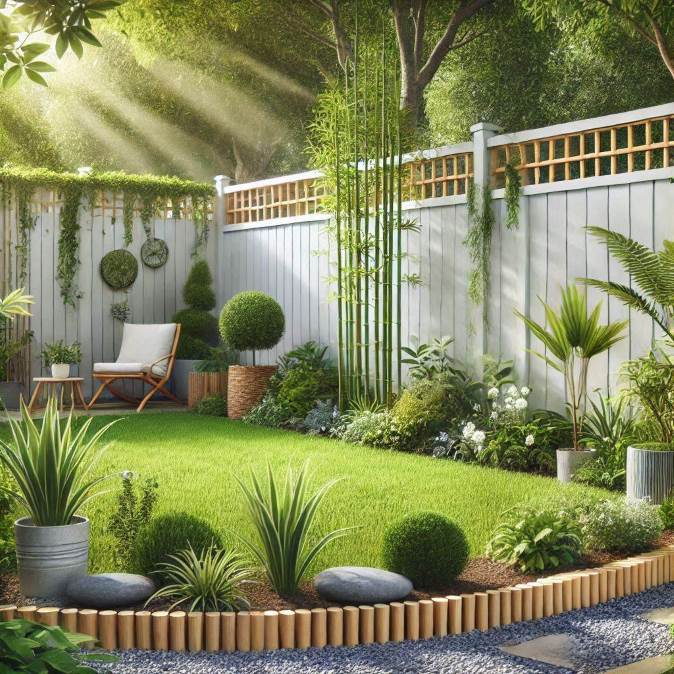Sustainable Fencing: Choosing Eco-Friendly Materials for Your Property
Fencing materials play a significant role in your property’s aesthetics, privacy, and security. However, they also have an impact on the environment. Choosing eco-friendly options can reduce that impact and promote a more sustainable future. Vinyl, aluminum, and other durable materials offer great alternatives to traditional wooden fences, minimizing the carbon footprint of your fencing while enhancing your property.
Why Choose Sustainable Fencing Materials?
 Fencing is often seen as a long-term investment. However, the environmental consequences of certain materials can be quite harmful. Traditional wood fences, for example, come from cutting down trees, contributing to deforestation and affecting local wildlife and ecosystems. Additionally, these wooden fences can require regular maintenance, which involves toxic chemicals like paints and preservatives that are harmful to the environment.
Fencing is often seen as a long-term investment. However, the environmental consequences of certain materials can be quite harmful. Traditional wood fences, for example, come from cutting down trees, contributing to deforestation and affecting local wildlife and ecosystems. Additionally, these wooden fences can require regular maintenance, which involves toxic chemicals like paints and preservatives that are harmful to the environment.
Opting for sustainable materials can address many of these issues. Sustainable fencing options like vinyl, aluminum, and composite materials offer durability, reduced maintenance, and the ability to last for decades without contributing to environmental degradation. If you’re looking for a reliable Connecticut fence installation, these options balance functionality and eco-friendliness. You can explore companies specializing in sustainable fencing solutions by checking out Connecticut fence installation.
Eco-Friendly Fencing Materials
Vinyl Fencing
Vinyl fencing is one of the most popular eco-friendly alternatives to wood. Unlike wood, which can rot or warp over time, vinyl is made from recycled materials and is highly resistant to the elements. It doesn’t require staining or painting, which reduces the need for harmful chemicals. Additionally, vinyl fences are durable and can last for several decades without needing to be replaced. Once their life cycle ends, vinyl fences can often be recycled into new products, making them a sustainable choice.
Aluminum Fencing
Aluminum is another durable, sustainable fencing option. Aluminum fences are long-lasting and resistant to rust and corrosion, making them ideal for various weather conditions. The material is lightweight yet sturdy and can be recycled infinitely without losing its quality. Aluminum fences require little to no maintenance and are often coated with environmentally friendly finishes, further reducing the need for harmful chemicals.
Composite Fencing
Composite materials combine wood fibres and recycled plastics to create a fence that resembles wood but offers the durability and low maintenance of plastic. The composite material is often made from recycled materials, reducing the demand for virgin resources. Like vinyl, composite fences do not require the use of harmful paints, stains, or preservatives. They are also resistant to rotting, cracking, and fading, making them a long-lasting, sustainable option for homeowners.
Bamboo Fencing
Bamboo is one of the fastest-growing plants in the world and can be harvested sustainably without causing harm to the environment. Bamboo fencing offers an eco-friendly option that is both stylish and strong. It is highly durable and can withstand harsh weather conditions. Bamboo also has natural antibacterial properties, which make it resistant to insects and rot, eliminating the need for chemical treatments.
Steel Fencing
For those seeking a more industrial look, steel is a great choice. Steel fences are extremely durable, long-lasting, and recyclable. They are highly resistant to damage from the elements, reducing the need for frequent repairs or replacements. Steel is often coated with powder, which is a more eco-friendly alternative to traditional paints. As with aluminum, steel fences can be recycled at the end of their life cycle, making them a sustainable option.
The Benefits of Sustainable Fencing
Choosing sustainable fencing materials brings several benefits. First, they are generally more durable than traditional wood fences, meaning fewer repairs and replacements. This not only saves you money but also reduces waste in landfills. Second, eco-friendly materials require less maintenance. For example, vinyl and composite fences do not need to be painted or stained, which means fewer toxic chemicals are used.
Sustainable materials like aluminum, bamboo, and vinyl often come from recycled sources, which helps conserve natural resources. Choosing eco-friendly materials contributes to a circular economy and reduces the demand for new raw materials.
READ ALSO: Embracing the Environmental Benefits of Patio Heaters: Enhancing Outdoor Comfort Responsibly
Conclusion
Selecting sustainable fencing materials can improve the aesthetics of your property while minimizing environmental impact. Options like vinyl, aluminum, composite, and bamboo offer long-lasting solutions that are durable, low-maintenance, and eco-friendly. Choosing one of these materials enhances your property’s security and privacy and contributes to a greener planet. When considering your next fence installation, be sure to explore the many eco-friendly options available to you.

